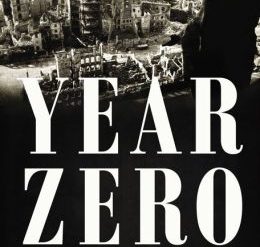
It’s difficult even to dip your toes into the field of poverty without tripping over the Millennium Villages Project. So extensive has been the coverage of this ambitious – some would say hubristic – endeavor that scholars may spend years sifting through the documented record. But anyone curious about the Millennium Villages need only read The Idealist, financial journalist Nina Munk’s eminently readable and extensively researched book about ending poverty in Africa. She focuses on the Project and the extraordinarily gifted man who conceived and forced it on the world’s consciousness. Munk’s first-hand account should stand for years as the authoritative judgment on this ill-considered venture.
Estimated reading time: 5 minutes
The Millennium Villages Project grew from a newfound concern with poverty in the mind of Jeffrey Sachs. Then a celebrated professor of economics at Columbia University and head of its Earth Institute, Sachs fastened on the idea of investing large sums of money in a dozen selected villages around sub-Saharan Africa to perform a sort of “shock therapy” that would lift the lucky residents out of poverty in five years and demonstrate to the world how anti-poverty work should be done.
He set a goal of raising $120 million to fund the program, allowing for a budget of $120 per resident per year, for a total of $600 throughout its five-year duration. His goal was to achieve such undeniable success that the major foreign aid donors – the Americans, the Europeans, the Japanese – would then leap at the chance to pour hundreds of billions of dollars into replicating the Project throughout the African continent.
The Idealist: Jeffrey Sachs and the Quest to End Poverty by Nina Munk (2013) 274 pages ★★★★★
You don’t need to know any more than this to understand that Sachs’ vision was fatally flawed and the Millennium Villages Project doomed to failure. An investment of $600 per person in lifting people out of poverty is an unconscionably large amount of money that no one in his right mind would ever agree to replicate. In any case, we learned long ago (or at least should have learned) that you can’t donate people out of poverty: what would come after the five years, the $600 were used up, and the Project staff no longer around?
Would anyone in the villages have learned anything except that manna came from heaven? And, to top it off, the foreign aid agencies, the World Bank, and other big funders all had agendas of their own and would be extremely unlikely to follow Sachs’ lead even if they didn’t already consider him an arrogant and misguided pest. Regardless of the Project’s outcome, they were never going to fund its rollout.
If you have any field experience in developing nations working with people who live on, say, $2 a day or less, you’re not likely to find any surprises in The Idealist. The Millennium Villages Project failed in ways that were entirely predictable. But you may well enjoy the tale nonetheless. The author lays it out in devastating detail.
Once upon a time, he was a superstar
Once upon a time Jeff Sachs was a superstar. He was a wunderkind, a word that always seemed to be attached to his name in the voluminous press reports that featured him. Sachs was the guy who had miraculously rescued the economies of Bolivia and Poland with “shock therapy.” A Harvard professor of economics, an extraordinarily young tenured member of the faculty, he was widely regarded as the brightest light of the department, and for several years he could (apparently) do no wrong.
Then came Sachs’ assignment to Russia as it reemerged an independent nation from the ruins of the Soviet Union, and things didn’t work out so well. But Sachs protested that he wasn’t really in charge, and that the critics who characterized his performance there as subpar didn’t know what they were talking about. Somehow, he escaped with his reputation virtually unscathed.
in 2002, Columbia University lured him away from Harvard with an obscenely large amount of money, including a $9 million town house in Manhattan, an endowed chair, and the leadership of an entity called the Earth Institute that allowed him to continue working as an international activist on the margins of academia. And when he turned his attention to world poverty, he somehow managed to raise an astonishing $120 million to fund his Millennium Villages Project – and even, five years later, an additional $60 million or so for a “phase two” of the project that hadn’t been originally planned.
Jeffrey Sachs’ second huge failure
That was then. Now, with a second major failure hanging so visibly around his neck, Jeff Sachs may well have seen the last of his 15 minutes of fame. Perhaps now people will be saying that Sachs was simply too smart for his own good.
Nina Munk is a long-time financial journalist whose work has appeared in numerous publications. She is now a contributing editor at Vanity Fair. In 2006, having had her fill of billionaires, she set out to learn and write about poverty. Sachs’ Millennium Villages Project was the biggest thing going, and she’d found her subject. She followed the Project’s work throughout its duration, including extended stays in the two Millennium Villages in Uganda and Kenya. The Idealist thus represents the culmination of years of work. It’s a brilliant example of honest, in-depth journalism of the sort so rarely seen in these hurried times.
For related reading
This is one of the books I’ve included in my posts, Good books about economic inequality and Gaining a global perspective on the world around us.
It’s also one of 20 top books about Africa.
Like to read good biography? Check out 10 great biographies.
If you enjoy reading nonfiction in general, you might also enjoy:
If this subject of interest to you, please check out my post, Third World poverty and economic development: a reading list. This book is included.
And you can always find my most popular reviews, and the most recent ones, on the Home Page.



























